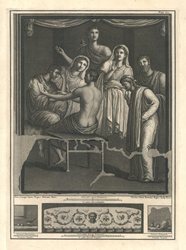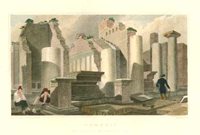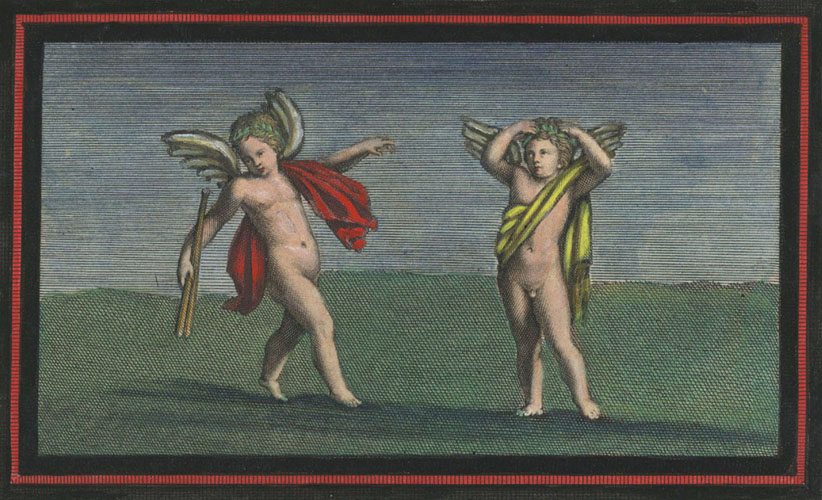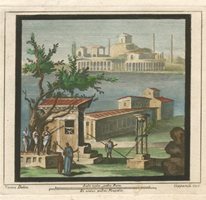 Before cameras were invented, discoveries had to be drawn and then engraved onto metal plates so that they could be printed for publication and circulation. This was necessary for all subjects. Antique prints and antique maps have always been appreciated, not only for the information shown but also for their decorative appeal. Traded for hundreds of years, antique maps and prints provide unusual artwork in classic style.
Before cameras were invented, discoveries had to be drawn and then engraved onto metal plates so that they could be printed for publication and circulation. This was necessary for all subjects. Antique prints and antique maps have always been appreciated, not only for the information shown but also for their decorative appeal. Traded for hundreds of years, antique maps and prints provide unusual artwork in classic style.
Frescoes decorated the walls of ancient civilizations in many parts of the world. Fine 18th century engravings show floor mosaics and wall frescoes of buildings and ruins, people and their lifestyles, customs and beliefs - as well as nature. They were frequently embellished by artistic friezes that inspired the neo-classical movement centuries after they were painted.
 Following further excavation of Pompeii from 1819, English archaeologist, Sir William Gell, also made drawings of Pompeii. The simpler engravings that were published in England c1832 are in stark contrast to the stylish classicism of those engraved by Niccolo Vanni and Francesco Lavega c1767 in the previous century. Without early artists' work we would not know much at all about Roman times. We could only interpret stories within our own imagination.
Following further excavation of Pompeii from 1819, English archaeologist, Sir William Gell, also made drawings of Pompeii. The simpler engravings that were published in England c1832 are in stark contrast to the stylish classicism of those engraved by Niccolo Vanni and Francesco Lavega c1767 in the previous century. Without early artists' work we would not know much at all about Roman times. We could only interpret stories within our own imagination.
 These days, modern technology aids excavations. Drones, geo-radar, endoscopy and laser scanners are used by archaeologists, architects, restorers, volcanologists, geologists, antropologists and palaeobotanists. In the middle of the 18th century when the first major excavations were recorded, the intricate process of mezzotint engraving was usually employed for the finest detail of portraits. In the eighteenth century engravings were still printed on paper that was made by hand. The grained texture of the paper adds much to the beauty of these antique prints and maps. Public appreciation of these engravings has been such that many have been coloured at some time since publication.
These days, modern technology aids excavations. Drones, geo-radar, endoscopy and laser scanners are used by archaeologists, architects, restorers, volcanologists, geologists, antropologists and palaeobotanists. In the middle of the 18th century when the first major excavations were recorded, the intricate process of mezzotint engraving was usually employed for the finest detail of portraits. In the eighteenth century engravings were still printed on paper that was made by hand. The grained texture of the paper adds much to the beauty of these antique prints and maps. Public appreciation of these engravings has been such that many have been coloured at some time since publication.
Later colour of artwork usually adds to their value instead of detracting - as long as the colour is done well. We sell antique prints and maps from our website as pieces of precious paper to allow the new owners to choose their own framing style. Some antique prints and maps are available already mounted or framed. Naturally, we only use conservation materials when mounting artwork. These days specialist framing glass also is available to protect artwork and framing materials from deterioration by ultraviolet light.
I hope you enjoy these beautiful engravings from Pompeii and Herculaneum as much as I do. If you have any queries please do not hesitate to contact me by email to sales@antiqueprintclub.com or by phone to 61 (0)412 442283.